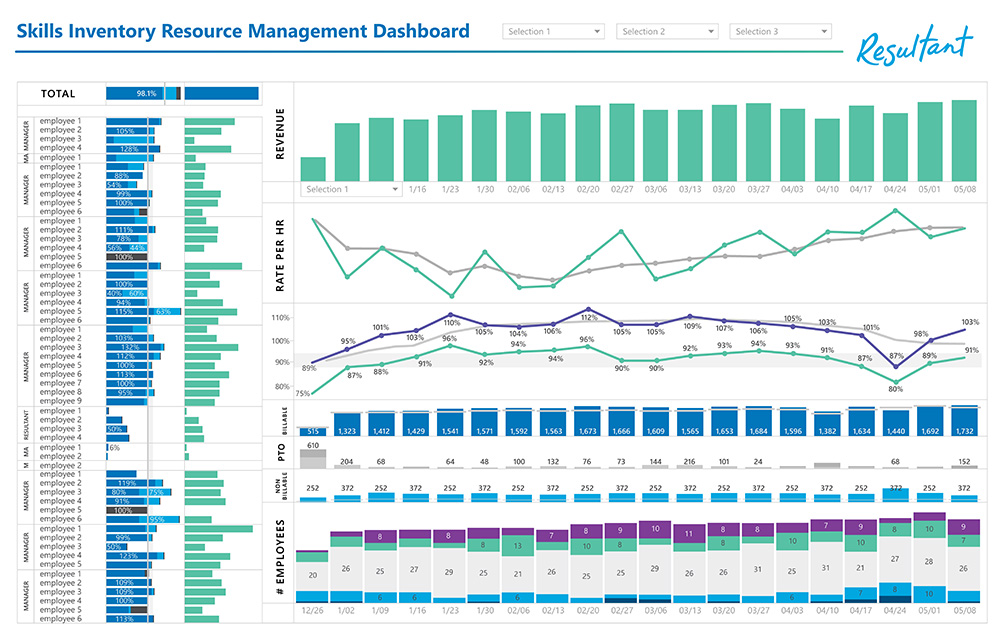Why Advanced Analytics Matter to Any Business with Skills Inventory Resources
Share
But in 2013, the growing firm had to face the fact that it was time to focus their skills on their own business operations.
Having too much inventory—in this case, billable resources—quickly reduces cash, while having too little inhibits sales and growth.

Unlocking a Powerful Solution with a Data Analytics Engine
Undeniable Results from an Analytics Engine Bring Far-Reaching Benefits
Company Culture: The Human Side of Data Analytics
Find out what an analytics engine can do for your culture and valuation. Talk to a team member today about a proof-of-concept engagement.




